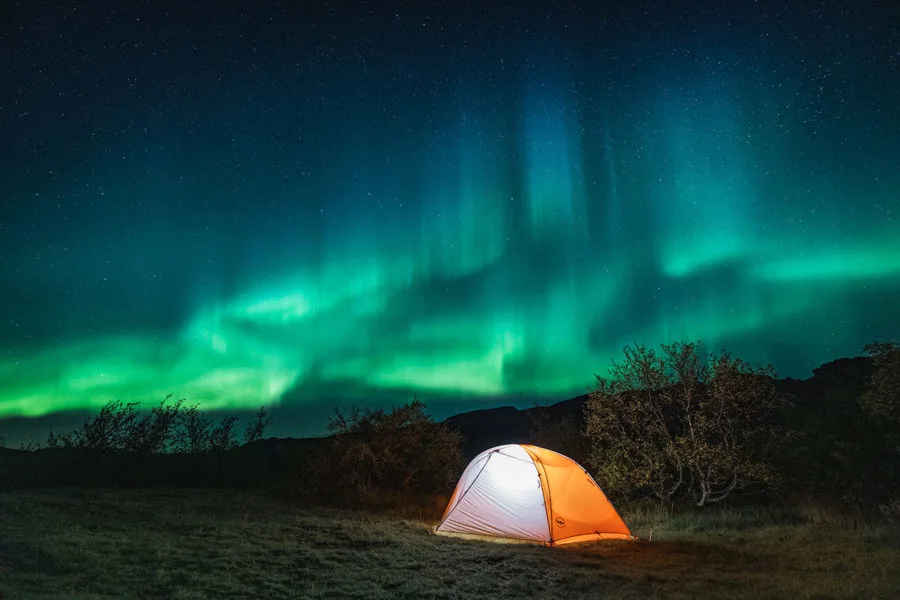Have you ever dreamed of seeing the colorful Northern Lights dancing in the night sky? Here’s how to find and photograph the stunning Northern Lights in Iceland!
Witnessing the magic of the Northern Lights at least once is a bucket list experience for most people. I have been lucky enough to see and photograph the “Northern Lights” many times in several different countries, including Iceland.
The Northern Lights can mesmerize you for hours watching their mysterious green glow dance across the sky over mountains or sea.
Tracking and taking amazing photos of the Northern Lights in Iceland is always a top priority when I visit!
However, many people don’t realize that this incredible natural phenomenon is often elusive and unpredictable.
So, to help improve your chances, I’ve put together this guide on how to see and photograph the Northern Lights in Iceland. I’ll share some tips on how to find them, where to see them, and the camera settings and editing techniques I use.
Northern Lights Photography Guide
How to Find the Northern Lights in Iceland
So why are the Northern Lights so hard to see, even in Iceland? Well, that’s because many different factors are involved.
For the best Northern Lights experience, you need dark skies, clear weather and strong aurora activity. Ensuring that all of these requirements fit together took some planning.
looking for dark skies
For the same reason stargazing is better in the dark, viewing the Northern Lights is also best in the dark. Light pollution from towns hinders the experience.
Yes, you can occasionally see the lights of Iceland’s capital, Reykjavik. However, you’ll have more luck in the countryside, away from artificial light sources.
avoid the full moon
Try to avoid hunting for the Northern Lights during a full moon if you can. The brightness of the moon can make it more difficult to see the aurora in the sky.
Also, remember that the moon rises and sets like the sun. So you can try to time the Northern Lights hunt when the moon is hidden below the horizon for maximum darkness.
My favorite smartphone app for viewing moonrises and moonset times around the world is called Photographer’s Ephemeris.
That said, sometimes a little moonlight from the 1/4 moon can also illuminate the background landscape enough to create some spectacular images!
wait for sunny weather
If it’s cloudy, you won’t be able to spot the Northern Lights. So pay attention to the weather forecast, especially cloud cover (infrared satellite imagery helps a lot).
While you may still see some aurora if it’s only partly cloudy, you’ll have the best chance when there are no clouds at all.
My favorite smartphone app for checking cloud conditions around the world is called MeteoEarth.
Check Aurora Forecast
Because auroral activity originates from the sun in space, scientists were able to predict its strength by observing the sun’s solar wind and the strength of Earth’s magnetic field. This “KP Index” ranges from 0-9.
From my experience, when the KP index is 3 or 4, you might be lucky enough to see the Northern Lights in Iceland. If you are lucky enough to be there (KP 5+) when the solar storm hits, then you are in for a great show!
My favorite smartphone app for forecasting the aurora is called My Aurora Forecast Pro.
It will send a push notification when there is an opportunity to see lights near you!
For global aurora forecasts, space weather cheers are also good.
Self-driving and group travel
You should be able to rent a car in Iceland and go hunt for the Northern Lights yourself. Another option is to rent a camper van so you can get away from the town and its streetlight pollution.
